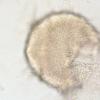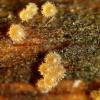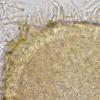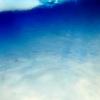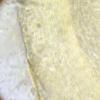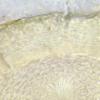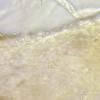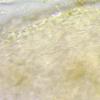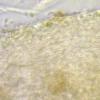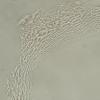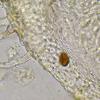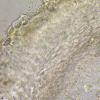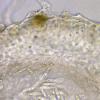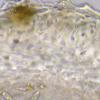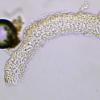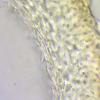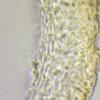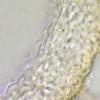
15-12-2025 15:48
 Danny Newman
Danny Newman
Melanospora cf. lagenaria on old, rotting, fallen

15-12-2025 15:54
 Johan Boonefaes
Johan Boonefaes
Unknown anamorph found on the ground in coastal sa

15-12-2025 21:11
 Hardware Tony
Hardware Tony
Small clavate hairs, negative croziers and IKI bb

15-12-2025 07:09
 Danny Newman
Danny Newman
indet. Rutstroemiaceae sp. on unk. fallen leavesMc

15-12-2025 07:05
 Danny Newman
Danny Newman
Pseudosclerococcum golindoi (det: Zotto)near Cosb

15-12-2025 11:49
 Danny Newman
Danny Newman
ITS sequences from the following two collections B

15-12-2025 12:34
 Danny Newman
Danny Newman
indet. Rhytismataceae on oak leafnear Purchase Roa

09-12-2025 12:06
 Andgelo Mombert
Andgelo Mombert
Bonjour,Je recherche l'article concernant Hypobryo
Pale orange, hairy "Trichonectria"?
Björn Wergen,
28-10-2012 09:54
 hello everybody,
hello everybody,this is the second time I have found this small fungus growing on old Digitalis purpurea stems, the first one I have seen this was in Karawankental, Austria, in May 2012. Now it is the end of October and it seems as if this species grows the whole year.
Well, just look at the photos, I have compared the two collections and they show obviously the same species. But what is it? I have tried keys to Trichonectria and Lasionectria, but everytime I thought I got it, there had been differences in spore size. Perithecia are about 0,4-0,7 mm, Wall 15-22µm, the whole surface of the perithecia has single hyaline hairs with a thickened base and 1-2 septa.
Arr I am angry about this, the species is so clearly and characteristic, but I am not able to identify it :(
Perhaps you can help me. The brown spores you see in the last photo perhaps do not belong to the "Nectria", I did not see them in the first collection.
regards,
björn
edit: I forgot the hairs: 40-50x3,5-5µm.
Alain GARDIENNET,
28-10-2012 10:20
Re : Pale orange, hairy "Trichonectria"?
Hi Björn,
Very nice fungus.
Perhaps a Lasionectria closed to L. sylvana ? It seems to be different, as you said.
Are your ascospores striated ?
Alain
Very nice fungus.
Perhaps a Lasionectria closed to L. sylvana ? It seems to be different, as you said.
Are your ascospores striated ?
Alain
Björn Wergen,
28-10-2012 13:06

Re : Pale orange, hairy "Trichonectria"?
Hi Alain,
I did not see any striate ascospores, but perhaps I should try it again with CB. I will also try Lugol reaction.
regards
björn
I did not see any striate ascospores, but perhaps I should try it again with CB. I will also try Lugol reaction.
regards
björn
Christian Lechat,
28-10-2012 17:30

Re : Pale orange, hairy "Trichonectria"?
Hi Björn,
I think it is Lasionectria genus but it would be useful to see a vertical section of the ascomatal wall. Are you sure of the size of perithecia? they seem very large...
Christian
I think it is Lasionectria genus but it would be useful to see a vertical section of the ascomatal wall. Are you sure of the size of perithecia? they seem very large...
Christian
Björn Wergen,
29-10-2012 22:53

Re : Pale orange, hairy "Trichonectria"?
Hi Christian, hi Alain,
here are some new photos of the wall. It seems to be 18-23µm thick and consists of flattened cells. I had also seen that the surface of the spores is striated :)
Finally I have meassured the perithecia. They are 0,15-0,35 mm.
regards,
björn
here are some new photos of the wall. It seems to be 18-23µm thick and consists of flattened cells. I had also seen that the surface of the spores is striated :)
Finally I have meassured the perithecia. They are 0,15-0,35 mm.
regards,
björn
Christian Lechat,
30-10-2012 05:39

Re : Pale orange, hairy "Trichonectria"?
unfortunately, the section is not enough legible, could you try to do it less thick? You should try with dried material. I know that it is difficult.
Have a nice day,
Christian
Have a nice day,
Christian
Alain GARDIENNET,
30-10-2012 07:09
Re : Pale orange, hairy "Trichonectria"?
Christian, what do you think about sylvana ? Ascospores are a bit too long, aren't they ?
Is it possible for this species or could it be another sp. ?
Alain
Christian Lechat,
30-10-2012 08:30

Re : Pale orange, hairy "Trichonectria"?
Salut Alain,
L. sylvana is not like this, hairs are very different in size (up to 200µm long) and fasciculate
Christian?
L. sylvana is not like this, hairs are very different in size (up to 200µm long) and fasciculate
Christian?
Björn Wergen,
30-10-2012 09:24

Re : Pale orange, hairy "Trichonectria"?
Dried material? The material is dried now but it seems to be impossible. I will try it this evening when I come back home :)
regards,
björn
regards,
björn
Christian Lechat,
10-11-2012 04:32

Re : Pale orange, hairy "Trichonectria"?
Hi Björn,
your images show the ascomatal wall in top view without section, it would be better to make a vertical section as on the attached photo ( Lasionectria sp.). You can make such section with a razor blade under a dissecting microscope. Don't worry, I'm sure that you are able to do it.
your images show the ascomatal wall in top view without section, it would be better to make a vertical section as on the attached photo ( Lasionectria sp.). You can make such section with a razor blade under a dissecting microscope. Don't worry, I'm sure that you are able to do it.
All my best,
Christian
Björn Wergen,
10-11-2012 07:44

Re : Pale orange, hairy "Trichonectria"?
Hi Christian,
the problem is, that I have only a x15 microscope, with this it seems to be impossible to make such a section. I have to buy a real dissecting microscope...
I will do so and will answer when I get some new photos :)
regards and thanks a lot,
björn
the problem is, that I have only a x15 microscope, with this it seems to be impossible to make such a section. I have to buy a real dissecting microscope...
I will do so and will answer when I get some new photos :)
regards and thanks a lot,
björn
Christian Lechat,
10-11-2012 08:32

Re : Pale orange, hairy "Trichonectria"?
OK Björn,
I understand,
Christian
I understand,
Christian
Björn Wergen,
23-11-2012 21:22
Björn Wergen,
23-11-2012 21:53
Christian Lechat,
24-11-2012 06:39

Re : Pale orange, hairy "Trichonectria"?
Hi Björn,
nice section!
So, I think that it is Lasionectria but there is no known species which fit with your specimen.
Are the striations dehiscing from ascospore when slightly crushed under the cover slip? ?
Jacques and I have a Lasionectria sp. nov. (in press) from FWI, collected on Passiflora which would fit with yours, but it would be necessary to compare them.
Could you please to send me a part of your collection?
Christian
nice section!
So, I think that it is Lasionectria but there is no known species which fit with your specimen.
Are the striations dehiscing from ascospore when slightly crushed under the cover slip? ?
Jacques and I have a Lasionectria sp. nov. (in press) from FWI, collected on Passiflora which would fit with yours, but it would be necessary to compare them.
Could you please to send me a part of your collection?
Christian
Björn Wergen,
24-11-2012 10:22

Re : Pale orange, hairy "Trichonectria"?
Hi Christian,
of course I can send you something from the collection.
regards,
björn
of course I can send you something from the collection.
regards,
björn
Christian Lechat,
24-11-2012 11:26

Re : Pale orange, hairy "Trichonectria"?
Thank you Björn,
I would be surprised if your specimen was the same species than mine but we have to check it.
All the best,
Christian
I would be surprised if your specimen was the same species than mine but we have to check it.
All the best,
Christian
Björn Wergen,
24-11-2012 16:19

Re : Pale orange, hairy "Trichonectria"?
If it is not the same as yours, what do we do then? Describe it as new in the same article as your one? :D
Christian Lechat,
24-11-2012 18:21

Re : Pale orange, hairy "Trichonectria"?
Hi Björn,
our publication is in press, we cannot intervene any more.
I don't believe that it is the same species
Let's wait to see,
Christian
our publication is in press, we cannot intervene any more.
I don't believe that it is the same species
Let's wait to see,
Christian
Christian Lechat,
08-12-2012 17:20

Re : Pale orange, hairy "Trichonectria"?
Dear Björn, ?
I received your specimen today, I studied it and I think that it is a new species of Lasionectria.
I cultivated it today, as soon as I will have its anamorph and molecular data, I will contact you in private.
Cheers,
Christian
I received your specimen today, I studied it and I think that it is a new species of Lasionectria.
I cultivated it today, as soon as I will have its anamorph and molecular data, I will contact you in private.
Cheers,
Christian
Björn Wergen,
09-12-2012 02:02

Re : Pale orange, hairy "Trichonectria"?
Hi Christian,
many thanks for this, it is great. And I had this species twice, one new record for Austria and one also for Germany :D
regards,
björn
many thanks for this, it is great. And I had this species twice, one new record for Austria and one also for Germany :D
regards,
björn


